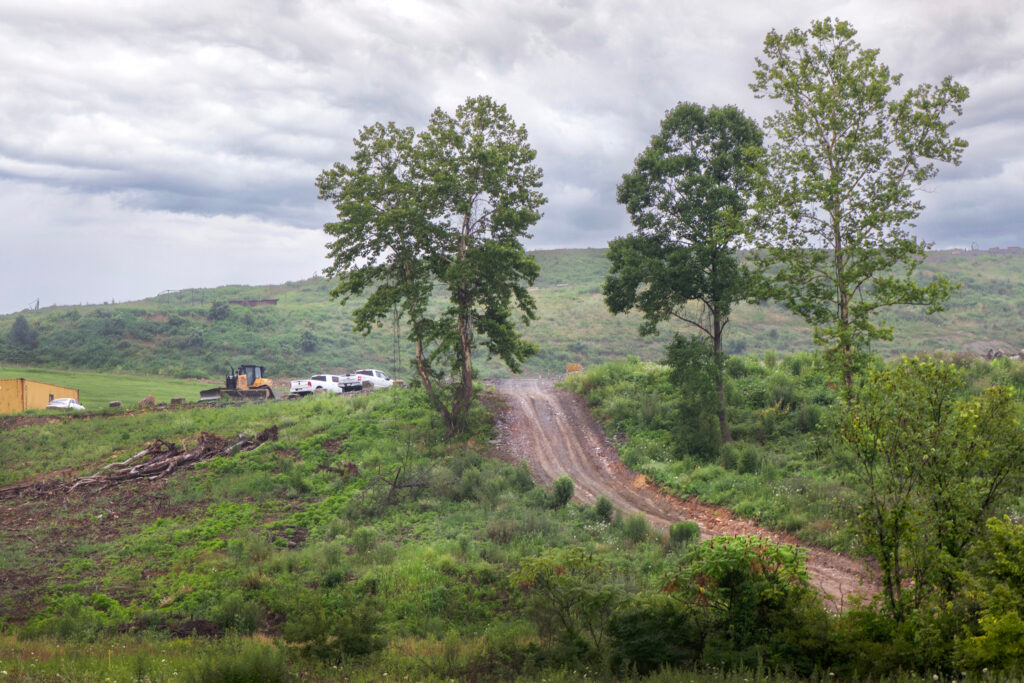There was ostensibly nothing illegal about the plume of sulfates approaching Clermont County, Ohio’s drinking water wells in 2019.
When consumed, sulfates can cause diarrhea and dehydration. Worse, experts view it as an indicator of other, more dangerous chemicals present in the groundwater. And there was valid reason to suspect that might be the case in Clermont County. Adjacent to the wells sat the remains of the Walter C. Beckjord Power Plant, along with the waste it generated from 62 years of burning coal.
In spite of their concerns, there was little county officials could do to address the issue. Neither state nor federal law obligated the power plant’s owners to prevent the potentially contaminated water from migrating offsite. In fact, it was only the owner’s decision to relocate some of the coal waste that ultimately subjected it to stricter cleanup requirements.
We’re hiring!
Please take a look at the new openings in our newsroom.
See jobs
Dave Altman represented more than 100 local residents who in 2021 threatened to sue Beckjord’s owners over the coal waste dumps. According to Altman, weak state and federal regulations allowed the contamination to spread unchecked for years. “It’s been spreading and there were not federal regulations for a long time, and Ohio just left it at that,” he said. “Now the chickens are coming home to roost.”
Beckjord was not alone. In fact, it was one of 30 coal plants in Ohio—and 320 nationwide—that, for nearly a decade, occupied a glaring loophole in U.S. environmental regulations, leaving them effectively unbound by coal waste monitoring or cleanup requirements. On Thursday, the EPA moved to close that loophole.
Uncontained and Unregulated
At issue in Clermont County were “coal combustion residuals” (CCRs), the fine gray ash left over when coal is burned. Over the past century, U.S. coal plants have produced roughly five billion tons of CCR, or enough to cover the entire state of Ohio in a layer an inch and a half thick.
More than half of this coal ash produced each year is recycled into concrete, drywall or other applications known in the industry as “beneficial use.” Most of what remains is impounded onsite, where it is covered with water or soil to prevent it from escaping into the air or waterways. But EPA reporting shows that improper lining on coal ash ponds and landfills can allow toxins from the ash—including arsenic, boron and lead—to leach into groundwater. A 2022 study by the environmental nonprofit Earthjustice found that 94 percent of the U.S.’s coal ash ponds remain unlined, posing a cancer risk for nearby communities—disproportionately low-income and communities of color—who rely on wells for their drinking water.
“EPA exempted about 2 billion tons of toxic waste from any safety rules whatsoever.”
It took a disaster for the federal government to begin regulating coal ash. In the aftermath of a catastrophic dam collapse in 2014 that sent 39,000 tons of coal ash cascading into North Carolina’s Dan River, the EPA published its first rule regulating CCR disposal. The rule, finalized in 2015, required power plant owners to monitor groundwater near their impoundments for contamination, install protective lining on new impoundments and address impoundments found to be contaminating groundwater.
But the rule contained a striking exception. Arguing that it would be difficult to determine responsibility for past waste disposal, the EPA only applied these requirements to power plants still operating on Oct. 19, 2015. All plants closed down before then remained exempt. That’s why Beckjord, which closed in 2014, had no obligation to monitor or seal its coal waste until its owner relocated some of it. It’s also why more coal plants were retired in the first 10 months of 2015 than in any calendar year since—utilities contemplating retiring their coal plants hastily closed them down before the deadline to avoid being subject to the new requirements.
“The 2015 rule failed to regulate about half of the coal ash in existing, leaking dumps—dumps that could be poisoning our water supplies,” said Lisa Evans, senior counsel for Earthjustice’s clean energy program. “EPA exempted about 2 billion tons of toxic waste from any safety rules whatsoever.”
In 2017, a coalition of environmental groups calling itself the Utilities Solid Waste Activities Group (USWAG) sued to change that. Arguing in front of the U.S. District Court for the District of Columbia, the group presented evidence that these so-called “legacy impoundments” were in fact more likely to leak than active ones and therefore warranted regulation. The D.C. Court of Appeals agreed and ordered the EPA to revise the rule. On Thursday morning, following a lengthy public comment period, the EPA did just that.
Ash Thursday
Thursday’s rule makes two major changes to existing CCR regulation. First, it applies the monitoring and remediating requirements from the 2015 rule to plants and impoundments that shut down before Oct. 19, 2015. Second, it extends these requirements to coal ash surface dumps that may not fit neatly within the definition of an ash pond or landfill. The EPA groups all of these categories together under the umbrella term “CCR Management Unit (CCRMU),” which it defines as “CCR surface impoundments and landfills that closed prior to the effective date of the 2015 CCR Rule, inactive CCR landfills, and other areas where CCR is managed directly on the land.” All told, the EPA expects the compliance cost of the new rule to be between $214 and $240 million per year, borne primarily by the owners of the waste sites.
In a statement, the EPA said, “This rule reflects the Administration’s commitment to reduce pollution from the power sector while providing long-term regulatory certainty and operational flexibility.”
Evans calls the new rule “a huge win for America’s health and water resources. EPA’s new coal ash rule finally makes polluters pay,” she said. “At last the coal plant owners must clean up the toxic mess they created.”
Not everyone sees it in such a positive light. John Ward is a spokesman for the American Coal Ash Association, an industry group representing utilities and construction companies. “It certainly doesn’t do anything to encourage beneficial use,” Ward said of the new rule. The new category for CCRMUs, he said, “is not well defined and could threaten to sweep in a lot of legitimate recycling activities.”
Law professor Michael Gerrard of Columbia University thinks that if the new rule does hamper beneficial use, there could be a straightforward reason. “Many uses called ‘beneficial’ aren’t in fact always so beneficial, such as using the ash as construction fill,” he said. Evans likewise pointed out that if beneficial uses are environmentally harmless, they would not face any additional penalties. “Why would they be using a material that they either know or suspect would cause groundwater contamination?” she asked.
Cleanup Time
Will the new rule generate a wave of coal ash cleanup? Gerrard thinks it won’t be that easy, at least in the short term. Given the choice between removing coal ash, selling off waste sites or simply delaying action, Gerrard said, “I expect few if any site owners will choose excavation. It’s enormously expensive; it’s almost impossible to find locations that would take the excavated material; and it can pose greater health risks than leaving the material in place, because digging up ash could allow it to blow into nearby communities, and the thousands of truck trips required have their own risks.” Given the EPA’s limited capacity for enforcement and the possibility of future legal challenges, site owners may, for the moment, find it in their interest to put off compliance until prodded to act.
This story is funded by readers like you.
Our nonprofit newsroom provides award-winning climate coverage free of charge and advertising. We rely on donations from readers like you to keep going. Please donate now to support our work.
Donate Now
In reality, the impact is likely to vary by location. Coal ash impoundments exempted from the 2015 EPA rule were bound only by state regulations. In Ohio, those regulations were exceedingly lax. “It will have a big impact everywhere,” said Altman. “But other states didn’t exempt fly ash from the definition of solid waste like Ohio did.” That means that power plant owners in Ohio—and other states with weak coal ash regulations—may have a larger compliance gap to close.
There is one point on which most experts agree: The ultimate impact of the new rule will hinge more on a Tuesday in November than a Thursday in April. Effective implementation “requires a strong EPA that believes in this rule,” said Evans. “With a change of administration, we will not see the type of enforcement actions that we’re anticipating under Biden.”
In Clermont County, it lends additional security to a community eager to protect its drinking water from the contamination of the Beckjord site. “This is like a belt and suspenders,” said Altman. “In other words, there will now be two ways that the site will be covered.”
















